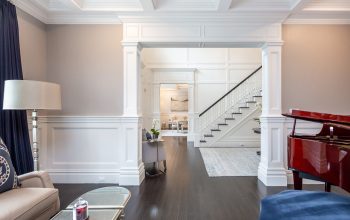- Increase the space for cooperation.
According to a study by Herman Miller, 60% of working hours are not occupied by workers in various industries, and private offices are not occupied 77% of the time. With this information in mind, companies are gradually moving away from their assigned work spaces and instead are focusing on expanding the collaborative space. However, as we said, it is not only about adding more conference rooms, but also about creating real workspaces or project areas where employees can collaborate and work together based on a project.
- Environment display
As the design of the offices became smaller and the walls were shortened, there was not enough space for people to draw graphics, smart maps, charts, lists and other work-related materials. Although people can now use computers to obtain this information, research shows that employees prefer to work with physical material that they can easily access. Creating an office that gives employees enough vertical space to display work-related materials is an excellent way to improve collaboration. It also provides them with an inspiring and vibrant work environment.

- Create diversity with landscape planning.
Many companies learn to look at offices, how urban planners see cities as places of “high reputation”, with qualities that stimulate and create an atmosphere of research, attention and participation by Time Clock Wizard. This means that, just as cities or areas have specially designated areas for various types of activities, the office must offer different locations to meet the different labor needs of employees.




